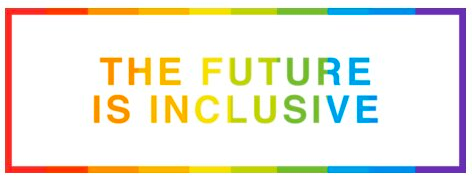
Call for a consultation
How to Communicate in a Diverse Workplace
By spartahrbiz
Diversity, Equity, and Inclusion: Advancing the Conversation in a Diverse Workplace
These important discussions often conjure a variety of responses, but they are critical to establishing and maintaining balance in a diverse workplace. When engaged through a skilled professional these methods can open a dialogue that allows everyone involved to be heard, understood, and accepted for who they are. It also provides tools that help everyone engage with one another in sensible ways that minimize conflict. More importantly, they can improve employee interaction and the overall health and well-being of staff and the work environment. Here are some guidelines to help in managing this vital discussion.
Set The Stage
- Establishing the motivation for the discussion is the first and most important step. Your message to your team about such a conversation must have a genuine purpose and a clear goal that benefits everyone involved.
- Personal biases can act as obstacles that prevent us from understanding the perspective of others. Identifying them is important in overcoming the things that keep us from engaging in meaningful ways with others.
- Practice the talk beforehand. The best way to maintain a discussion that is consistent, stays on message, and moves along effortlessly is to have it with a colleague or two who can provide feedback. They can also ask questions you may hear and help prepare you to answer.
- Do your homework. Educating yourself on how to engage in discussions on diversity, personal biases, and follow up will result in an outcome that make for long-lasting changes that benefit your entire team.
- Find a neutral space to have this discussion. Finding a neutral space to have this conversation is important for many reasons. A neutral space is more likely to influence an open discussion and allow staff to feel safe to speak freely. A change of scenery also has a way of calming concerns that the physical workspace may bring about.
The Conversation
- Self-control and humility are the rule of the day. One of the reasons why misunderstandings occur is because judgement, criticism, and/or immediate debate overshadow a point one is trying to make. Being opened to actively listening to one another without interruption naturally influences restraint from the audience.
- Confidentiality is the single most important element of this exercise. The leadership affirming everyone’s privacy establishes trust and allows staff to speak freely, resulting in establishing strong relationships.
- Grant permission to make mistakes. Allowing staff to speak freely may make some people uncomfortable, but everyone has something meaningful to say. It may not come out the way that everyone agrees is palatable, but with patience and understanding we can get to the bottom of what someone is trying to say and genuinely understand them.
- Be authentic. Honesty and openness is what we would expect from everyone, but for any number of reasons we may not always get that. Affording everyone the opportunity to speak their mind however they see fit has the potential to establish strong bonds among staff.
- Having differences are what make our surroundings unique and interesting. The beauty in these differences is that in spite of them, we can still find common ground. We all have people we care for, things that make us happy, and pivotal events in our lives that relate to others even though we may think differently, or believe different things.
- Practice active listening. Asking everyone participating to agree to a few ground rules sets a tone for your discussion and gives you permission to reaffirm those rules if people do not follow. The leader of the discussion must be willing and able to interject confidently to ensure that the conversation stays on topic. The rules are that one person is allowed to speak at a time and everyone actively listens without debate or interruption. The leader mirrors what the person said to ensure the staff member is heard and can clarify by asking questions like, “how did that affect you?” This is the opportunity to empathize because their feelings, in many ways, are genuinely relatable.
- Own your mistakes. If a person is offended by something we say, acknowledging our part in inspiring that feeling is empathizing with them. Trivializing or marginalizing individuals is considered a micro aggression. A micro aggression is an indignity, whether intentional or unintentional, that communicates hostile, derogatory, or negative attitudes toward stigmatized or culturally marginalized groups. For example, “I don’t see you as a woman or a person of color.” Understanding it in a discussion like this requires patience, and as mentioned before, active listening to understand what it is, and how microaggression can affect people.
After the Conversation
- Thank them for sharing. Everyone’s personal story, and particularly in this context, are very private matters. Not everyone is comfortable in sharing personal experiences with their coworkers. Complementing their candor and commitment to the process opens others to do the same.
- Follow up and apply what we learned. As often occurs, in the absence of follow up, all of the commitment, time and effort given to this process is lost, not to mention the good will and momentum established. Having ongoing conversations, and periodic follow ups with the entire team and individuals assures everyone that the organization is dedicated to this cause. It helps maintain the openness necessary for team leaders and individuals to maintain an open, diverse, and equitable work environment.
- Ongoing learning is as important as the initial discussion. It expands perspectives, understanding, and gives leadership an opportunity to share new ideas and innovations in equity and inclusion that may benefit the entire organization.
- Nurture and maintain relationships. Having a discussion like this, if done correctly, can establish meaningful relationships with staff. Checking on them from time to time assures them that the conversation on diversity and equity was meaningful to you and that it requires their participation to maintain.
- Having staff members team up with one another ensures continuity and accountability of takeaways from your discussion on equity and inclusion. Team members can have lunch to keep lines of communication open and build trust.
Final Words
Beyond the expectations of your employees, creating and maintaining an inclusive and diverse workplace ensures that your staff have a voice and that their voices are meaningful to you, their leaders. Businesses that are consistently most productive are those that go the extra mile to establish a welcoming environment for all.
Providing the skills and guidance necessary to create these environments is what we do best. Tell us what we can do to help by scheduling a consultation today. Contact us.
Contact
Mailing Address
P.O. Box 1452
Burlingame, CA 94011

Sparta Business Solutions is your premier HR Consultants in the Bay Area. We have been helping businesses navigate the ever-changing HR compliance laws along with all aspects of HR Management. It’s our goal to become a partner in your business growth and ensure that you’ve prepared your staff and talent for the future.
© 2021 Sparta Business Solutions, All Right Reserved. Site Design by Advertising Avenue

